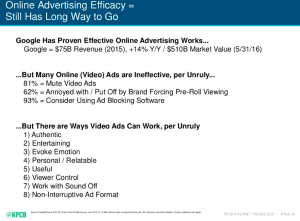
Does your team experience high levels of stress and frustration in the quest to get things done? Executing your strategic plan doesn’t have to be this hard. If it is, your team is most likely finding itself stalled by one of these three roadblocks.
These hurdles aren’t always obvious, but you can’t begin to address them until you’ve identified them.
Here are three common problems preventing companies from executing their strategy and tips on how to overcome them in 2015.
1. Difficulty Managing Change
McDonald’s CEO Don Thompson recently announced he was stepping down after a little more than two years, in large part because he was unable to make enough substantial changes to keep the ubiquitous fast food chain more appealing to customers with higher expectations and more options.
The problem lies with McDonald’s highly structured system; its processes and the people trained to follow them. While solid processes have allowed the chain to produce consistent products, they have also caused the organization to be slow to change compared to its competitors.
Managing change can be difficult for several reasons. Like McDonald’s, your company may be clinging to processes so rigid that employees are unable to deviate from them to accommodate new products or procedures. There may also be a lack of buy-in from employees or a resistance to using new approaches.
Employees need to be fully prepared for changes and willing to accept them. In addition, managers and employees need to be held accountable for implementing new processes and achieving results, with incentives that match them. Offering new products or more customization at McDonald’s takes more time, and it’s not likely to succeed in an environment where employee performance is measured solely by speed.
2. Lack of Employee Involvement and Buy-In
To inspire greater employee involvement and buy-in, leaders must empower their direct reports by including them in the development of goals and initiatives. This isn’t just for the benefit of the direct reports. Some of the best insights come from the people on the front lines of your organization. When your direct reports and their employees have greater influence, leaders make better decisions. This also builds trust and improves employee engagement.
One way to take the pulse of your organization’s performance in this area is to conduct an employee engagement and retention survey. This can help you recognize the extent to which employees feel they don’t have a voice or their voice isn’t being heard. At McDonald’s, there is a well-documented culture of establishing a rigid system and then training employees to follow it, rather than encouraging them to come up with new ideas. This could change if managers hosted regular meetings where employees were able to offer feedback on what’s working and what isn’t at their particular location.
3. Lack of Clear Priorities
Because leaders often feel many things need to be done right away in order to remain competitive, companies often experience an inability to prioritize and focus. Each time a new initiative is introduced, it distracts people’s attention and resources from existing initiatives, making it increasingly difficult to execute well. Worse, employees don’t have a clear understanding of what’s most important, so they are pulled in too many directions. To overcome this roadblock, leaders must be selective about the initiatives they choose to pursue. They must carefully consider whether it’s both important and urgent and whether there are enough resources to support it.
Finally, your leaders must clearly communicate priorities to employees as they change. It should be an ongoing conversation.
Executing your strategy effectively across your organization requires thoughtful planning and effort, but it doesn’t have to be a battle or take a crisis to get people aligned and motivated. Once you have the right people and processes in place, it will become easier.
What other roadblocks might be standing in the way? To discover how top companies have overcome these barriers and two others, download our free guide, “5 Companies That Excelled At Executing Strategy in 2014.”
(297)







